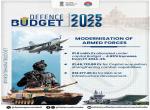The Finance Minister, Mr. P Chidambaram has begun a major exercise to rein in the burgeoning fiscal deficit which is likely to rise to 6 percent of GDP. The stated objective is to bring down the deficit to a level of 5.3 percent of the GDP as many financial and economic experts have recommended that maintaining a deficit of around 5 percent would be a prudent step looking at the current state of economy. This would prevent erosion of country’s fiscal credibility which has been somewhat under attack by credit rating agencies. Though plans have been proposed to reduce the government’s expenditure and obtaining funds from disinvestment, sale of spectrum and other assets and asking for special and enhanced dividends from Public Sector Enterprises, yet these measures may not be adequate to restrict the fiscal deficit to the targeted figure of around 5 percent.
In October, the Finance Ministry called for a reduction of non-plan expenditure by 10 percent which in effect means that over all savings, through this step, could amount to Rs. 75,000 crores. Though, it is not clear as to whether reduction of defence expenditure is part of this step yet, it is well known that generally the Ministry of Defence has not been quite up to the mark when it comes to spending the allotted funds especially from the capital account (meant for modernisation programmes) in time.
At the time of presentation of defence budget for financial year 2011-12 in February, 2011 it was claimed that funds allotted have been fully spent and this was as a result of a number of steps taken by the Ministry of Defence (MOD) to fast track the procurement process. However, while presenting the Revised Estimates (RE) for 2011-12, it came to light that from Army’s capital budget an amount of Rs. 3055 crores had been surrendered; Navy was allowed to spend more than its allotted budget by Rs. 2801 crores otherwise the amount of under-spending would have been higher. Total surrender of funds by the MOD which included those by the Air Force amounted to Rs. 5727 crores. This only indicates that despite frequent revision of Defence Procurement procedures the lingering problem of delays in acquisitions has not been entirely solved and the expenditure inefficiencies persist.
The problems of defence modernisation are further compounded by what is projected by the Services/MOD and what is finally allotted because of the budgetary constraints. The tables given below indicate the requirements projected and the funds allotted.


As can be observed from the above figures there is a complete mismatch between what is projected and what is allotted. In fact, during the entire plan period of Eleventh Five Year Defence Plan (2007-2012) each of the services has got allocations that are less than the projections during each of the year. Further, the committed liabilities cannot be changed and therefore the axe falls on the capital budget for new schemes. The problem is more acute in case of the Army where DGOF Supplies has taken away large chunk of the capital modernisation budget of 2012-13. All this has been questioned by the Parliament’s Standing Committee for Defence (SCD); MOD representative in his reply obfuscated the issue by a giving a stock reply that Ministry of Finance would be approached for further funds. The SCD has expressed grave concern on the meager outlay for the new programmes. The Committee has also stressed that not only the committed liabilities should be taken care of but additional allocations should also be made to cover the huge gaps between the required and existing capabilities. There are deficiencies in force levels, armaments, munitions, aircraft and so on.
With the MOF’s continuing its efforts in restricting the fiscal deficit it might come about that defence budget for 2012-13 (Rs 193407.29 Crores) may be negatively impacted. Some estimates indicate that the allocations may be reduced by upto five percent or an amount of Rs. 5500 crores to about Rs. 10,000 crores. Since the scope for reducing the revenue budget is limited the capital budget would become target for major reductions. Further, it is the new schemes that will suffer rather than the past contractual obligations.
The critical hollowness as brought out by the present and previous Army Chiefs had moved the government to place orders for acquisition of missiles and ammunition for tanks and infantry combat vehicles. The IAF has also ordered for 200 Brahmos cruise missiles; apparently all such acquisitions might have to be met through better accounting/management between the revenue and capital account. But, the new programmes in the capital account are likely to suffer thus putting paid the plans for ushering in RMA at a faster pace in the Indian Armed Forces. As it is, the proposal for raising a Mountain Strike Corps has been sent back to the Chiefs of Staff Committee for a relook thus relieving the Finance Ministry from making any allocations for the same if it were to be raised in the current fiscal year. The Army’s plans for acquiring heavy and medium vehicles, artillery guns, air defence systems, communications equipment would also suffer a setback. The Army’s budget being over 50 percent of the defence budget is likely to be impacted the most. The Air Force and Navy programmes would fare no better. If the economic situation deteriorates further then there is a likelihood of large committed liabilities of the technology intensive IAF and Indian Navy being deferred which may again add to delays.
The economic growth has been showing a downward momentum and various estimates indicate that this year the growth would be less than 6 percent of the GDP (somewhat closer to 5 percent). The Prime Minister, addressing the Combined Commanders Conference some years back had promised to enhance the defence budget to 3 percent of the GDP if Indian economy continued to grow at 8 percent of the GDP. But that may not come about for some time. For last two years the defence budget has been less than 2 percent of the GDP which has prevented the acceleration of modernisation of the armed forces. Further, in the coming elections season the problems may be compounded by the need of the government to divert funds for development sector or other programmes which would have bearing on the forthcoming elections in 2014.
While there is a need for the armed forces to streamline its revenue expenditure it also needs to rectify its expenditure inefficiencies for which the MOD has been criticized many times. As underlined earlier, though Defence Procurement Procedures have been modified several times yet the same has not helped in removing the inefficiencies in procurement. If the MOD is unable to spend 2/3rd of the funds by end December then there is a great scope for reducing its allocations in the Revised Estimates stage for the current fiscal. There are indications that this level of expenditure may not be achieved by then.
Meanwhile, China and Pakistan have been adding to their arsenal and have vastly improved their strategic posture at the borders. The SCD in its report for 2012-2013 demands for grants has emphasised on ‘the urgent need for to build the Defence capabilities to face any of the challenges including the worst scenario of two front war. As such the Committee strongly recommends that the requisite allocations should be made available to the Ministry of Defence for their different programmes. Besides, the Ministry of Defence on their part should also build capacities to utilize the allocated resources.”
Thus, the modernisation programme of Indian Armed Forces needs to be kept on track. The Finance Minister should be looking largely at the other ministries and departments and other innovative ways to shore up government’s finances as the military has been, for many years, allotted funds which are much less than what is required.
Published Date: 11th December 2012










Post new comment